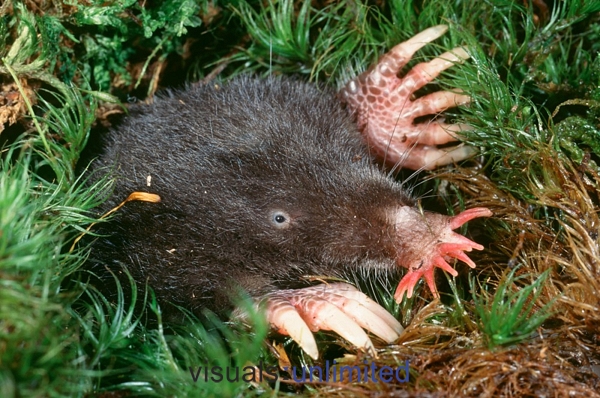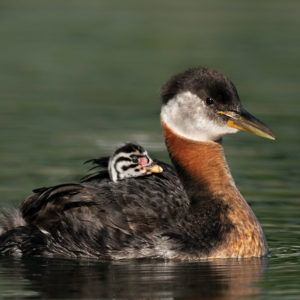Fantastic Beasts and Where to Find Them, Eh?

Tina-Louise Rossit,
Guest Blogger
This post was written by guest blogger Tina-Louise Rossit.
One might not think of Canada when thinking of fantastic creatures; however, this country is home to many wonderful animals worthy of the spotlight! Canada’s vast, diverse territory is filled with many different ecosystems and animals adapting to their niches. Adapting to the surrounding environment is hard work, and therefore evolution sometimes presents some pretty — umm — unique traits and characteristics. Some animals have developed morphological oddities, other behave quite specifically, but all have something we can learn from!
Today’s honourary species is the Star-Nosed Mole. Basically a furball meets a sea anemone, the Star-Nosed Mole has a unique evolutionary development. Can you guess what it is?

Photo of a Star-Nose Mole by gordonramsaysubmissions (CC BY 2.0)
If you guessed 22 tentacle-like appendages, you’re right. Like all species of moles, the Star-Nosed Mole is a digger. They can dig extensive underground tunnels in moist soils. Found in eastern North America, their Canadian range extends from Manitoba to Labrador. They prefer soils with poor drainage such as wet meadows, marshes, and peatlands. In the underground world, it’s pretty dark so one might think a super sensitive smelling organ would be useful, right? Sure … however, those finger-like appendages are way more useful than that.
These appendages comprise tiny sensory receptors called Eimer organs, named after Thomas Eimer who discovered them in 1871. Each appendage contains over 25,000 of these Eimer organs. The localization of these sensory receptors means that it can do all — smell, see, and touch. In fact, the Star-Nosed Mole basically has a compass, antennae, thermometer, extra graspers, and communicator all literally in front of its nose! For that, Eimer organs have been noted as one of evolution’s finest developments.
So, how do Eimer organs work? The moment the receptors touch things, electrical signals are sent via nerve fibres straight to the brain for processing. The brain analyses the frequency, force, and response to stimulation and then formulates the picture of the surrounding area. The process is similar to echolocation but more sophisticated. Therefore, going through a pitch-black tunnel is easy since these moles have the environment mapped out in their minds.
The study of the Star-Nosed Mole and Eimer organs has opened up many exciting questions on the evolution of animal appendages and its corresponding genetic expressions. How did the Star-Nosed Mole originate? How did Eimer organs originate? Are there other animals with similar mechanisms? Should changes to the evolutionary tree be made? In the past, bones were the only available remnants to study since squishy soft-tissue organs don’t fossilize well and thus their secrets are lost. Luckily for science, new technologies such as embryonic development are now a great tool to uncover the mysteries of evolutionary adaptations.
The results from studying the Star-Nosed Mole’s early development are already quite exciting. Studies show that the genetic “program” to make the star nose during embryonic development is unlike any other animal appendage, suggesting an independent evolutionary history! Once the background history is sorted out then and the how is answered, the next question is why. Why did the Star-Nose Moled evolve? What environmental conditions influenced its evolution? And what else can we learn from this little mole?
Just think of it — it took humans a long time to invent GPS and yet the Star-Nosed mole had something similar this entire time! Now, isn’t that fantastic?!
Tune in next time when we talk about another one of Canada’s unique creatures!
Acknowledgments: BioKids, IUCN Red List, Journal of Experimental Biology, Natural History Magazine, Wikipedia



